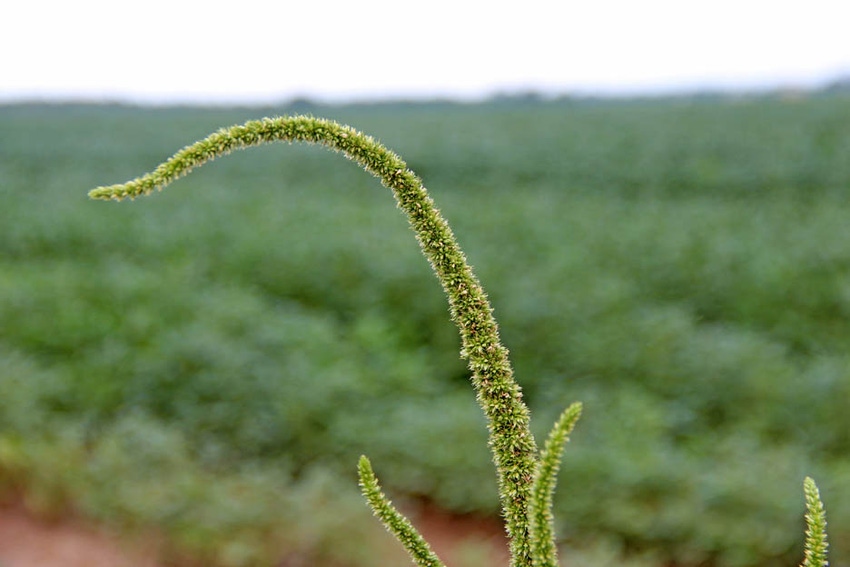March 20, 2013

Researchers have now confirmed that six glyphosate-resistant weed species have been identified in California. Four have been known to exist for some time; they are horseweed (marestail), hairy fleabane, rigid ryegrass and annual ryegrass. To that list, junglerice has recently been added with confirmed instances from Kern to Colusa counties, and even more recently, Palmer amaranth has been coming through glyphosate treatments in Tulare County, according to Extension weed specialist Brad Hanson, UC Davis, speaking at The Almond Conference last December.
Additional weeds that have become more of a challenge to control and are on the suspect list are goosegrass and, in the central San Joaquin Valley, the summer grasses sprangletop and witchgrass.
According to Hanson, an ABC-funded researcher, using preemergence herbicides is one of the best ways to manage existing herbicide-resistant weeds and reduce the selection for new species. Preemergence herbicides like Goal, Prowl, Surflan, Chateau and Matrix are commonly used in tree-nut orchards, but the newer herbicides Pindar GT and Alion are also becoming popular.
Although both Pindar GT and Alion have provided excellent weed control over the past few years, a few hairy fleabane escapes were noted in some Alion treatments in 2012 due to the dry winter. This was mostly observed in cases where Alion was applied to moist soil but then had several weeks of no rainfall. The escapes apparently were germinated, but not yet emerged at application and later emerged through the treated soil.
Hanson and other researchers are evaluating tank mixes of Alion and Matrix to help in this situation and also further reduce selection for resistant weeds. “The genie is out of the bottle on weed resistance to glyphosate, and there is no putting it back in,” Hanson says. “But using residual herbicides, with their alternate modes of action, may reduce selection for additional resistant weeds while providing several months of weed control, which can save time during a busy time of the year.”
More from Western Farm Press
Outcry grows over feral hog damage across US
About the Author(s)
You May Also Like




